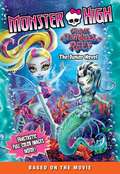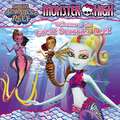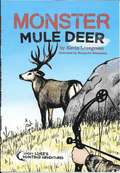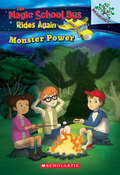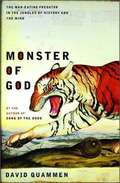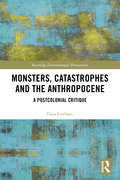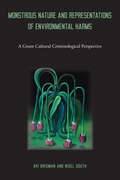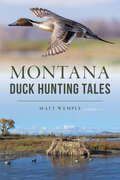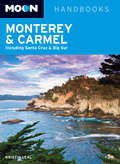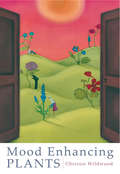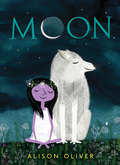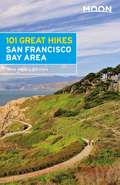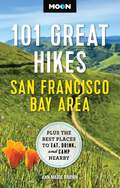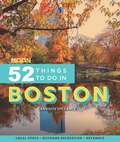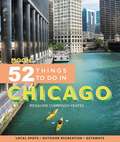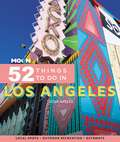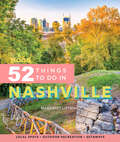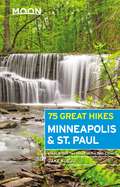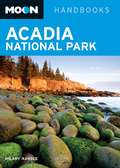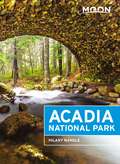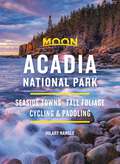- Table View
- List View
Monster High: The Junior Novel
by MattelA new Monster High junior novel movie tie-in to Monster High: Great Scarrier Reef! © 2016 Mattel. All Rights Reserved.
Monster High: Welcome to the Great Scarrier Reef
by Margaret GreenLagoona Blue, her ghoulfriends, and Gil Webber are swept into a vortex in the Monster High swimming pool that takes them to the Great Scarrier Reef for a fintastic undersea adventure! Can Lagoona face her deepest fear so they can all get back to Monster High? © 2016 Mattel. All Rights Reserved.
Monster Mule Deer (Lucky Luke's Hunting Adventures)
by Kevin Lovegreen James Monroe Design Red Ink Writing Editing Margarita SikorskaiaThe moment has come for Luke to put all his skills, determination and luck together to make the stalk of his life on the old drop tine buck. Join Luke and Dad as they travel to Alberta Canada for their first archery mule deer hunt. The adventure proves to be another amazing journey where new friends are made, life lessons are learned and fun is around every corner.
Monster Power: A Branches Book (The Magic School Bus Rides Again) (The Magic School Bus Rides Again #2)
by Judy KatschkeHop aboard--again! The Magic School Bus is back in a brand-new Netflix TV showThis series is part of Scholastic's early chapter book line called Branches, which is aimed at newly independent readers. With easy-to-read text, high-interest content, fast-paced plots, and illustrations on every page, these books will boost reading confidence and stamina. Branches books help readers grow!Seatbelts, everyone! The Magic School Bus is back and ready to ride again. Professor Frizzle's kid sister Fiona might be the new teacher at Walkerville Elementary, but she's got the same old motto: take chances, make mistakes, and get messy! She decides to take the class camping, but come night fall their tent grounds are pitch black. But Arnold's been watching a ton of scary movies and has been having trouble going to sleep at night. What will Arnold do without a night light? The class thinks fast and learns a ton about renewable energy.
Monster of God: The Man-Eating Predator in the Jungles of History and the Mind
by David QuammenNatural history and fiction writer Quammen explores the psychological, mythic, and spiritual dimensions of the relationship between one flesh-eating animal and one human victim. He believes that relationship has played a crucial role in shaping the way people construe their place in the natural world. His sojourn ranges from old literature such as "Beowulf" and "Gilgamesh", to the movie "Alien Resurrection".
Monsters, Catastrophes and the Anthropocene: A Postcolonial Critique (Routledge Environmental Humanities)
by Gaia GiulianiMonsters, Catastrophes and the Anthropocene: A Postcolonial Critique explores European and Western imaginaries of natural disaster, mass migration and terrorism through a postcolonial inquiry into modern conceptions of monstrosity and catastrophe. This book uses established icons of popular visual culture in sci-fi, doomsday and horror films and TV series, as well as in images reproduced by the news media to help trace the genealogy of modern fears to ontologies and logics of the Anthropocene. By logics of the Anthropocene, the book refers to a set of principles based on ontologies of exploitation, extermination and natural resource exhaustion processes determining who is worthy of benefiting from value extraction and being saved from the catastrophe and who is expendable. Fears for the loss of isolation from the unworthy and the expendable are investigated here as originating anxieties against migrants’ invasions, terrorist attacks and planetary catastrophes, in a thread that weaves together re-emerging ‘past nightmares’ and future visions. This book will be of great interest to students and academics of the Environmental Humanities, Human and Cultural Geography, Political Philosophy, Psychosocial Studies, Postcolonial Studies and Critical Race and Whiteness Studies, Gender Studies and Postcolonial Feminist Studies, Cultural Studies, Sociology, Cultural Anthropology, Cinema Studies and Visual Studies.
Monstrous Nature and Representations of Environmental Harms: A Green Cultural Criminological Perspective
by Avi Brisman Nigel SouthHow does culture influence human relationships with the environment? In Monstrous Nature and Representations of Environmental Harms, green cultural criminologists Avi Brisman and Nigel South examine stories of monsters and disasters to address how the ways we depict and think about harms to the environment dissuade us from taking care of our planet and each other. The authors use examples from popular culture, including Disney and Marvel Cinematic Universe films, to consider ideas about how the environment responds to people who cause it harm. Brisman and South identify and discuss three dominant and interrelated depictions of the relationship between humans and the environment: first, nature as monstrous or fear inducing; second, nature and the Earth (or parts of it) as abject; and third, the entanglement of nature and the apocalypse, wherein nature is contributing to the end of the world, with an end point sometimes conceptualized as one without humans. Monstrous Nature and Representations of Environmental Harms argues that such representations have material consequences. The authors make the case for challenging them so that we neither perpetuate them nor retreat into cynicism and defeatism about the future of our planet.
Montana Duck Hunting Tales (Sports)
by Matt WempleDucks across the Big Sky To hunt ducks in Montana--where the land breathes history--is to experience extremes in geography, weather and wildlife. The breadth of mountains and prairie is unlike anywhere else in the Lower 48. Both the Central and Pacific flyways span the state's iconic wetlands, rivers and lakes. Hunting opportunities abound thanks to the state's wildlife conservation legacy on public and private lands. Hunters walk in the footsteps of plains Indians, Lewis and Clark and mountain men while looking for a spot to pitch decoys. Embark on an epic and distinct Big Sky journey with author and hunter Matt Wemple, where a moose or grizzly bear could stroll through the decoys at any time.
Monte
by George Corey FranklinMonte a grizzly cub is befriended by 2 miners who raise him and follow his life as an adult logging his adventures growing up. Like all Franklins books very funny.
Monterey & Carmel
by Kristin LealJournalist and Monterey Bay area resident Kristin Leal offers her firsthand experience and advice on Monterey, Carmel, and beyond, from Fisherman’s Wharf and Cannery Row to the nearby areas of Pacific Grove and Salinas. Leal includes various travel itinerary ideas, including Family Fun in Santa Cruz, Charmed in Carmel-by-the-Sea, and Visit Early California—a guide to the best antiques shops and Mexican restaurants San Juan Bautista has to offer. Complete with expert tips on wandering the redwoods in the Santa Cruz mountains, finding hidden waterfalls in Big Sur, and spotting otters at the Elkhorn Slough National Reserve,Moon Monterey & Carmelgives travelers the tools they need to create a more personal and memorable experience.
Mood Enhancing Plants
by Chrissie WildwoodChrissie Wildwood is an international aromatherapy educator and best-selling author of fourteen books on aromatherapy, herbal medicine and other natural therapies.Here she has written a unique book to delight plant enthusiasts everywhere. Focussing on the less explored beneficial effects upon mood of common herbs and healing plants, it provides thoroughly researched up-to-date information previously unavailable in a single volume.And you don't have to be unwell to benefit from mood-enhancing plants. For herbs, fragrant flowers, plant essences and traditional incense can be used to enrich your daily life.-Presents safe options to chemical anti-depressants and tranquillisers, including the mood-enhancing benefits of diet, healing music and contemplation of living plants.-Gives a cornucopia of recipes and ideas for healing disharmonious states of being, preventing the development of stress- related illness and engendering an inner sense of wellbeing.-Promotes the use of herb combinations tailored to individual need, with detailed instruction on preparing your own plant remedies, essential oil blends and inspirational incenses.-Provides botanical, biochemical, pharmacological, and traditional data on around one hundred healing plants, including those used by indigenous peoples for sacramental purposes.-Encourages the development of ecological awareness, the reawakening of our deep connection with the living Earth.-With mood-enhancing plants, you can engender tranquility, revitalisation, mental clarity, romance, creative inspiration, contemplation and a sense of celebration!
Moominland Midwinter
by Tove Jansson Thomas Warburton"This is snow," whispered Moomintroll. "I've heard about it from Mother, and it's called snow." Everyone knows that Moomins sleep through the winter. But this year Moomintroll has woken up in January. So while the rest of the family slumber, he decides to visit all his favorite summer haunts. But the valley is gone: the river, the grass, the trees-- everything is covered in this strange white stuff. Even the sun is gone! Moomintroll is angry: whoever Winter is, she has some nerve. At least he's not alone. Little My is awake, too, and having a wonderful time sledding on Moominmamma's tea tray. In fact, more creatures than Moomintroll ever imagined inhabit this new world, including a wise newcomer named Too-ticky who introduces him to this most mysterious of all seasons. The curious and comic inhabitants of Moominvalley are brought to life in Tove Jansson's delightful drawings, and as he bravely goes where no Moomin has gone before, Moomintroll discovers that maybe Winter is worth waking up for, after all.
Moon
by Alison OliverFor the over-scheduled generation, the illustrator of the popular BabyLit books explores the joy found in wildness, following in the footsteps of beloved bestsellers The Night Gardener and Mr. Tiger Goes Wild. Like many children, Moon leads a busy life. School, homework, music lessons, sports, and the next day it begins again. She wonders if things could be different. Then, one night, she meets a wolf. The wolf takes Moon deep into the dark, fantastical forest and there she learns to howl, how to hide, how to be still, and how to be wild. And in that, she learns what it’s like to be free. This simply worded and stunningly illustrated story reveals the joy to be found in play, nature, and, most of all, embracing the wild in us all.
Moon 101 Great Hikes San Francisco Bay Area (Moon Outdoors)
by Ann Marie BrownYour Adventure Starts Here with Moon Travel Guides!Are you at home in the golden hills of Berkeley, or the lush redwood forests of Marin? Explore the paradise just outside your door with Moon 101 Great Hikes of the San Francisco Bay Area. Inside you'll find:A Hike for Everyone: Hikes range from short, flat routes suitable for families to daylong, steep treks for more ambitious hikers, with options to extend or shorten the hikes. All hikes are rated for difficulty and marked for features such as dog-friendly or wheelchair accessibleExplore the Trails: Highlights like waterfalls, beaches, historic sites, wildlife, and wildflowers are noted on each hikeMaps and Directions: Explore with easy-to-use maps and point-by-point navigation for each trail, and including driving directions to each trailhead with GPS coordinates and public transit options when availableTop Hikes: Lists like "Best Redwood Forests," "Best Short Backpacking Trips," and "Best Bird-Watching" will help you choose where to hike in Napa, Sonoma, Marin, the East Bay, San Francisco, the Peninsula, and the South BayTrusted Advice: Anne Marie Brown shares the experience and knowledge she's gained from hiking, biking, and camping in and around the Bay Area more than 150 days a yearTips and Tools: Find essentials like health, safety, and trail etiquette, background information on the landscape and history of the trails, and volunteer opportunities so you can help keep the trails as beautiful as you found themWhether you're a veteran or a first-time hiker, Moon's comprehensive coverage and trusted advice will have you ready to lace up your hiking boots and head out on your next adventure.Looking for trails beyond the Bay Area? Try Moon Northern California Hiking or Moon California Hiking. Ready for an overnight outdoor adventure? Check out Moon Northern California Camping or Moon California Camping.
Moon 101 Great Hikes San Francisco Bay Area: Plus the Best Places to Eat, Drink, and Camp Nearby (Moon Hiking Travel Guide)
by Ann Marie Brown Moon Travel GuidesLocal author Ann Marie Brown reveals the best Bay Area hikes, from the wildflowers of the South Bay to the redwood forests of Marin. Get a breath of fresh air with Moon 101 Great Hikes San Francisco Bay Area. Inside you'll find:Hikes for everyone: Hikes range from short, flat routes suitable for families to day-long, steep treks for more ambitious hikers, with flexible options to shorten or extend many routes Explore the trails: All hikes are marked with difficulty ratings, features (such as dog-friendly or wheelchair-accessible), and highlights like beaches, historic sites, wildlife, and wildflowers Maps and directions: Follow easy-to-use maps and point-by-point directions for each trail, including driving directions to trailheads, GPS coordinates, and public transit options when available Top hikes: Strategic lists of the best waterfalls, summit vistas, hikes by season, and more to help you choose the right hike in Napa, Sonoma, Marin, the East Bay, San Francisco, the Peninsula, and the South Bay Trusted advice: Outdoors expert Ann Marie Brown shares the experience and knowledge she's gained from hiking, biking, and camping in and around the Bay Area for more than 150 days a year Tips and tools: Essential information about health and safety, trail etiquette, the landscape, and more, plus lists of the best campgrounds in each region Whether you're an outdoors expert or a first-time hiker, Moon's practical tips and comprehensive coverage will have you ready to lace up your boots and hit the trails. Looking for hikes beyond the Bay? Try Moon Northern California Hiking or Moon California Hiking. Ready for an overnight adventure? Check out Moon Northern California Camping or Moon California Camping.About Moon Travel Guides: Moon was founded in 1973 to empower independent, active, and conscious travel. We prioritize local businesses, outdoor recreation, and traveling strategically and sustainably. Moon Travel Guides are written by local, expert authors with great stories to tell—and they can't wait to share their favorite places with you. For more inspiration, follow @moonguides on social media.
Moon 52 Things to Do in Austin & San Antonio: Local Spots, Outdoor Recreation, Getaways
by Christina GarciaFrom that taco truck you haven&’t tried yet to the Hill Country getaway you keep meaning to plan, experience something new right here at home with Moon 52 Things to Do in Austin & San Antonio. Inside you&’ll find:Cool things to do in and around the cities: Get to know more about East Austin&’s Black and brown roots, look for murals by local artists, and have old-fashioned fun at a drive-in theater. Learn about native Texas plants on a hike, cool off at a nearby swimming hole, or sample authentic sotol in the desert. Grab a cocktail on Rainey Street, listen to live jazz, or learn how to two-step from an expert. People-watch in San Antonio&’s hip Pearl neighborhood, bike the Mission Trail, and feast on tacosDay trips and weekend getaways: Sample and sip on the Hill Country Wine Trail or dig in to a plate of barbecue in Lockhart. Cool off in Wimberley's Blue Hole, float the river in New Braunfels, or creep through the caves at Longhorn Cavern State ParkExperiences broken down by category: Find ideas for each season, activities with kids, outdoor adventures, late-night music, arts and culture, scenic drives, and moreA local's advice: Whether it&’s an art gallery or a historic landmark, local author Christina Garcia knows the ins and outs of Austin and San AntonioInspirational full-color photos throughout Easy-to-scan planning tips: Addresses, time allotment, and tips for avoiding the crowds at popular attractionsWhat are you doing this weekend? Try something new with Moon 52 Things to Do in Austin & San Antonio.About Moon Travel Guides: Moon was founded in 1973 to empower independent, active, and conscious travel. We prioritize local businesses, outdoor recreation, and traveling strategically and sustainably. Moon Travel Guides are written by local, expert authors with great stories to tell—and they can't wait to share their favorite places with you.For more inspiration, follow @moonguides on social media.
Moon 52 Things to Do in Boston: Local Spots, Outdoor Recreation, Getaways
by Cameron SperanceFrom that South End gallery you haven&’t visited yet to the mountain getaway you keep meaning to plan, experience something new right here at home with Moon 52 Things to Do in Boston.Cool things to do in and around the city: Stroll over to the Rose Kennedy Greenway or rent a kayak on the Charles. Dig in to dim sum in Chinatown and get lost in the stacks at Boston Public Library. Immerse yourself in local history on the Black Heritage Trail and get to know Cambridge beyond Harvard Yard. Pay respect to Boston&’s sports dynasties or take in a drag show at JacquesDay trips and weekend getaways: Rejuvenate on a weekend in the Berkshires, discover America&’s LGBTQ playground in Provincetown, get your feet wet at the beach, or explore a new art exhibit at Mass MoCAExperiences broken down by category: Find ideas for each season, activities for kids, outdoor adventures, arts and culture, scenic drives, and moreA local's advice: Whether it&’s a worthwhile stop on the Freedom Trail or a neighborhood food hall, local author Cameron Sperance knows the ins and outs of BostonInspirational full-color photos throughout Easy-to-scan planning tips: Addresses, time allotment, T stops, and tips for avoiding the crowds if you're heading to a popular attractionWhat are you doing this weekend? Try something new with Moon 52 Things to Do in Boston. About Moon Travel Guides: Moon was founded in 1973 to empower independent, active, and conscious travel. We prioritize local businesses, outdoor recreation, and traveling strategically and sustainably. Moon Travel Guides are written by local, expert authors with great stories to tell—and they can't wait to share their favorite places with you.For more inspiration, follow @moonguides on social media.
Moon 52 Things to Do in Chicago: Local Spots, Outdoor Recreation, Getaways
by Rosalind Cummings-YeatesFrom that gallery in River North you haven&’t visited yet to the lakeside weekend you keep meaning to plan, experience something new right here at home with Moon 52 Things to Do in Chicago.Cool things to do in and around the city: Wander over to the zodiac sculptures in Chinatown Square, or soak up some music and history at the Black Ensemble Theater. Try out surfing at Montrose Beach, rent a kayak on the Chicago River, or hike the elevated 606 trail. Browse for your next read at an independent bookstore, explore the street art in Pilsen, or admire the architecture on a stroll through the Beverly neighborhood. Catch a classic live blues show, sample Senegalese comfort food, or savor some Southside barbecue on a Sunday Day trips and weekend getaways: Cycle through the Morton Arboretum, connect with nature in Door County, dive into history in Galena, or unwind for a couple days at the perfect lakeside cabin Experiences broken down by category: Find ideas for each season, activities for kids, outdoor adventures, exploring Black history, getting to know a new neighborhood, and more A local's advice: Whether it&’s a bucket-list museum or an underrated dive bar, local author Rosalind Cummings-Yeates knows the ins and outs of Chicago Inspirational full-color photos throughout Easy-to-scan planning tips: Addresses, L stops, and nearby spots, plus tips for avoiding the crowds if you're heading to a popular attraction What are you doing this weekend? Try something new with Moon 52 Things to Do in Chicago.Winner of the 31st Annual North American Travel Journalists Association (NATJA) Travel Media Awards Competition: Best Travel Book or Guide, Honorable Mention About Moon Travel Guides: Moon was founded in 1973 to empower independent, active, and conscious travel. We prioritize local businesses, outdoor recreation, and traveling strategically and sustainably. Moon Travel Guides are written by local, expert authors with great stories to tell—and they can't wait to share their favorite places with you. For more inspiration, follow @moonguides on social media.
Moon 52 Things to Do in Los Angeles: Local Spots, Outdoor Recreation, Getaways
by Teena ApelesFrom the market you haven&’t hit yet to the desert getaway you keep meaning to plan, experience something new right here at home with Moon 52 Things to Do in Los Angeles.Cool things to do in and around the city: Check out the art galleries in West Adams, hop on a Jeepney in Historic Filipinotown, and learn a craft from local artisans. Sample street tacos on Sunset, enjoy a platter of Ethiopian food, or experience a drag-show brunch. Bike or skate along the LA River, search for sea life in the tide pools of San Pedro, or hike to the Griffith or Mount Wilson observatories Day trips and weekend getaways: Take the Pacific Surfliner Train from Union Station to Solana Beach, kayak on Lake San Marcos, or wander Ojai&’s nature preserves. Rent a golf cart on Catalina Island, shop and dine along Santa Barbara&’s State Street , or immerse yourself in desert artwork in the Coachella Valley Experiences broken down by category: Find to do lists for each season, activities for kids, outdoor adventures, arts and culture, food and drinks, live entertainment, and more A local's advice: Longtime Angeleno author Teena Apeles knows the city's ins and outs, from unexpected street art to hidden local history Inspirational full-color photos throughoutEasy-to-scan planning tips: Addresses, nearby attractions, and tips for avoiding the crowds if you're heading to a popular spot What are you doing this weekend? Try something new with Moon 52 Things to Do in Los Angeles. About Moon Travel Guides: Moon was founded in 1973 to empower independent, active, and conscious travel. We prioritize local businesses, outdoor recreation, and traveling strategically and sustainably. Moon Travel Guides are written by local, expert authors with great stories to tell—and they can't wait to share their favorite places with you. For more inspiration, follow @moonguides on social media.
Moon 52 Things to Do in Nashville: Local Spots, Outdoor Recreation, Getaways
by Margaret LittmanFrom that venue you haven&’t made it to yet to the weekend in the Smokies you keep meaning to plan, experience something new right here at home with Moon 52 Things to Do in Nashville.Cool things to do in and around the city: Get your hands dirty at a maker studio, discover a new museum, or get to know some of the local artists on Jefferson Street. Take a dance lesson or songwriting class, scope out thrift stores, or get fitted for custom-made cowboy boots. Catch an up-and-comer at Two Old Hippies or go backstage at the Ryman. Take your bike to the Shelby Bottoms Greenway and grab a beer as a post-ride reward. Feast on Kurdish food, test your tastebuds on hot chicken, or taste your way through Southern barbecue historyDay trips and weekend getaways: Sip samples at distilleries along the Tennessee Whiskey Trail, or groove to the blues in Memphis. Go whitewater rafting on the Ocoee, take the car out for cruise along the Natchez Trace Parkway, or go camping in Great Smoky Mountains National ParkExperiences broken down by category: Find ideas for each season, activities with kids, outdoor adventures, historic sites, live music, and moreA local's advice: Whether it&’s a bucket-list venue or an under-the-radar vintage shop, local author Margaret Littman knows the ins and outs of NashvilleInspirational full-color photos throughout Easy-to-scan planning tips: Addresses and time allotment, plus tips for avoiding the crowds if you're heading to a popular attractionWhat are you doing this weekend? Try something new with Moon 52 Things to Do in Nashville. About Moon Travel Guides: Moon was founded in 1973 to empower independent, active, and conscious travel. We prioritize local businesses, outdoor recreation, and traveling strategically and sustainably. Moon Travel Guides are written by local, expert authors with great stories to tell—and they can't wait to share their favorite places with you.For more inspiration, follow @moonguides on social media.
Moon 52 Things to Do in Phoenix & Tucson: Local Spots, Outdoor Recreation, Getaways
by Jessica DunhamFrom that blues bar you haven&’t visited yet to the desert hike you keep meaning to plan, experience something new right here at home with Moon 52 Things to Do in Phoenix & Tucson.Cool things to do in and around the cities: Kick back at a Spring Training game or squeeze into the grandstands of El Gran Mercado for some lucha libre. Bike the famed Loop in Tucson, kayak Tempe Town Lake, and lace up your boots for an urban hike in the Phoenix Mountains. Support local BIPOC writers at Palabras Bilingual Bookstore and taste what&’s on tap at a women-owned brewery. Savor Sonoran-style food like tamales and carne asada or try authentic Tohono O&’odham fry bread Day trips and weekend getaways: Dip into hot springs or cool off in a secret swimming hole. Travel back in time in a ghost town or sip your way through wine country. Trek the Arizona Trail, hike the hoodoos at Chiricahua National Monument, pick saguaro fruit, and spend a night under the stars Experiences broken down by category: Find ideas for each season, activities for kids, outdoor adventures, learning about indigenous cultures, getting to know a new neighborhood, and more A local's advice: Whether it&’s a wilderness area or a beloved soul food spot, local author Jessica Dunham knows the ins and outs of Arizona Inspirational full-color photos throughout Easy-to-scan planning tips: Addresses and nearby spots, plus tips for avoiding the crowds if you're heading to a popular attraction What are you doing this weekend? Try something new with Moon 52 Things to Do in Phoenix & Tucson. About Moon Travel Guides: Moon was founded in 1973 to empower independent, active, and conscious travel. We prioritize local businesses, outdoor recreation, and traveling strategically and sustainably. Moon Travel Guides are written by local, expert authors with great stories to tell—and they can't wait to share their favorite places with you. For more inspiration, follow @moonguides on social media.
Moon 75 Great Hikes Minneapolis & St. Paul (Moon Outdoors)
by Jake KuljuHike through tranquil pine forests and across vast prairies of wildflowers. With Moon 75 Great Hikes Minneapolis & St. Paul, adventure is just outside your door. Inside you'll find:A Hike for Everyone, ranging from short, flat routes suitable for families to daylong treks for more ambitious hikers, with options to extend or shorten the journey. All hikes are rated for difficulty and indicate if they are wheelchair-accessible or dog-friendlyExplore the Trails: Highlights like lakes, rivers, waterfalls, historic sites, wildlife, and wildflowers are noted for each hike Maps and Directions: Get around with easy-to-use maps, point-by-point navigation, and detailed driving directions to each trailhead with GPS coordinates and public transit options when availableTop Hikes throughout the Twin Cities Metro Area including Brainerd Lakes and the Mississippi River Valley, the St. Croix River Valley, the Minnesota River Valley, and Southern MinnesotaTrusted Advice: Expert outdoorsman and Minnesota native Jake Kulju has been hiking the greater Twin Cities since childhoodTips and Tools: Essentials like health and safety information, trail etiquette, and background on the landscape and history of the trailsWhether you're a veteran hiker or a first-timer, Moon's comprehensive coverage and strategic advice will have you ready to lace up your hiking boots and head out on your next adventure.Looking to experience more of the Midwest's beauty? Try Moon Michigan's Upper Peninsula or Moon Wisconsin.
Moon Acadia National Park
by Hilary NangleThese are new look Moon handbooks! "Moon Handbooks: Acadia National Park"ontains insightful and helpful advice, and includes clear maps andhotographs. Few places offer such diversity as Acadia National Park. You caniscover the coast's countless islands, each one distinct from the other,atch the sun set from atop Blue Mountain, stroll through the charmingillage of Castine, stretch out on the beach at Lamoine State Park, or hangut on the fisherman's wharves in Stonington or Corea. Expert travel writerilary Nangle helps you have a truly personal experience in this beautifulegion. Hilary details where to hike, paddle, bike, climb, ski, snowshoe, andicnic. This book is complete with maps, photographs, illustrations, andpecial emphasis on leading destinations such as Mount Desert Island,choodic Peninsula, Isle au Haut, Donnell Pond Public Reserved Lands, theaine Coastal Islands National Wildlife Refuge at Petit Manan, and outlyingowns.
Moon Acadia National Park: Including Acadia National Park (Travel Guide)
by Hilary NangleFind Your Adventure with Moon Travel Guides!Breathe in the pine-scented coastal air and discover a new kind of serenity with Moon Acadia National Park.Inside you'll find:Itineraries for every timeline, budget, and travel style, ranging from one day in the park to a two-week road trip Full-color, vibrant photos and detailed mapsStrategies for getting to Acadia National Park, avoiding crowds, and exploring its less-visited areasExpert tips for hiking, cycling, kayaking, and more, plus information on the right gear to packThe top activities and unique ideas for exploring the park: Pedal Acadia's famed carriage roads or take a driving tour along the scenic byways. Island-hop by sea kayak, or embark on a whale-watching excursion. Wiggle your toes in the warmth of Sand Beach, hike the remote Isle au Haut, or take a romantic horse-drawn carriage to the summit of Day Mountain. Peruse downtown Bar Harbor, take a dip in Echo Lake, and watch the sunset over a feast of freshly caught lobsterLocal insight from Mainer and Acadia expert Hilary NangleHonest advice on when to go and where to stay near the park, including campgrounds, hotels, and cottagesUp-to-date information on park fees, passes, and reservationsIn-depth coverage of Acadia on Mount Desert Island, Schoodic Peninsula, Blue Hill Peninsula, Deer Isle, Isle au Haut, Ellsworth, and TrentonAdditional coverage of gateway towns, including Bay Harbor, Northeast and Seal Harbors, the Southwest Harbor, Tremont, and islands in Mount Desert's vicinityRecommendations for families, LGBTQ+ travelers, seniors, international visitors, travelers with disabilities, and traveling with petsThorough background on the wildlife, terrain, culture, and historyWith Moon Acadia National Park's practical tips, myriad activities, and local expertise, you can plan your trip your way.Exploring the rest of New England? Try Moon New England or Moon Maine, Vermont & New Hampshire.
Moon Acadia National Park: Seaside Towns, Fall Foliage, Cycling & Paddling (Travel Guide)
by Hilary NangleExplore the pine-lined mountain trails, serene ponds, and rugged island coasts of Maine's stunning Acadia National Park with Moon. Inside you'll find:Flexible itineraries for every season, from the best of Acadia in one day to a two-week road trip, designed for day hikers, campers, families, outdoor adventurers, and moreThe best hikes in Acadia: Detailed descriptions, mileage and elevation gains, and difficulty ratingsExperience the outdoors: Embark on a whale-watching excursion to spot humpbacks, minke whales, porpoises, and puffins. Climb the pink granite steps to Huguenot Head or hike along the secluded rocky shore of Isle de Haut. Sea kayak at sunset, take a leisurely bike ride through fiery fall foliage, or cross-country ski along miles of carriage trails. Take a swim in Echo Lake, summit Cadillac Mountain, and marvel at the tide roaring through Thunder Hole Explore around Acadia: Munch on a hot popover with tea, feast on freshly caught lobster, and sip a cold beer at a local microbrewery. Shop for antiques and local artisan goods or wander through the galleries in downtown Bar Harbor. Discover Maine's rich history, admire the coastline from atop a towering lighthouse, and take a scenic drive along Park Loop RoadHow to get there: Up-to-date information on gateway towns, park entrances, fees, reservations, and toursWhere to stay in and outside the park, from forested campgrounds to historic inns Planning tips: When to go, what to pack, safety information, and how to avoid the crowds, with full-color photos and easy-to-use maps throughoutExpert insight from born-and-bred Mainer Hilary NangleHelpful background on Acadia's wildlife, terrain, culture, and historyFind your adventure in Acadia National Park with Moon.Exploring the rest of Maine? Try Moon Maine or Moon Coastal Maine. About Moon Travel Guides: Moon was founded in 1973 to empower independent, active, and conscious travel. We prioritize local businesses, outdoor recreation, and traveling strategically and sustainably. Moon Travel Guides are written by local, expert authors with great stories to tell—and they can't wait to share their favorite places with you.For more inspiration, follow @moonguides on social media.
